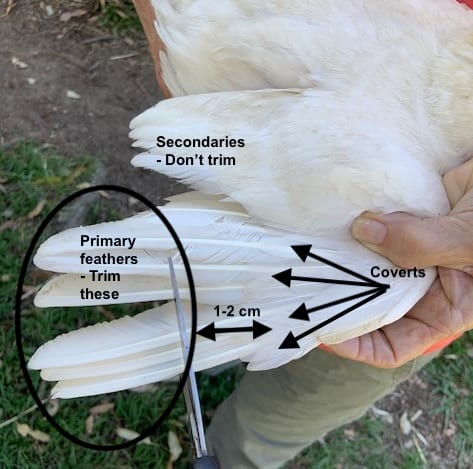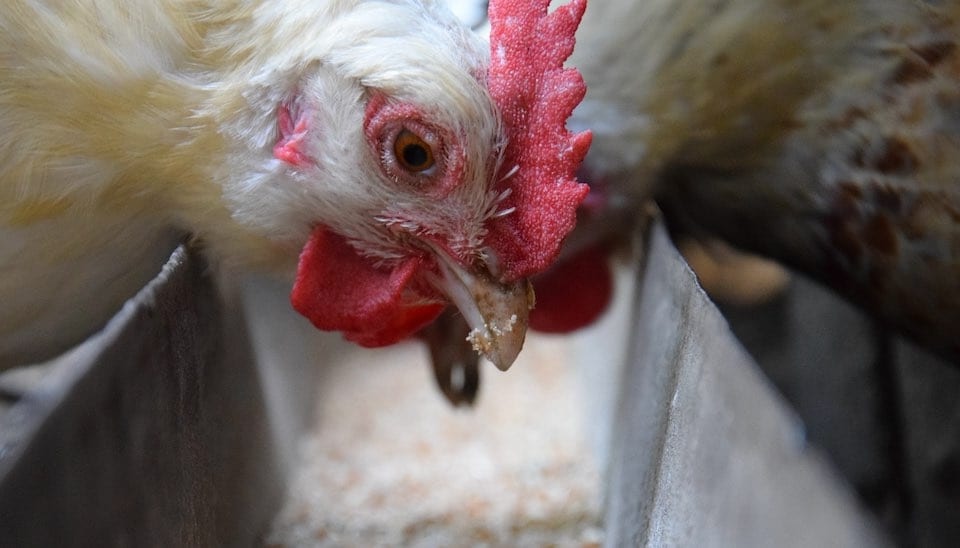How to Clip Chicken Wings and Keep Them from Flying
How to Clip Chicken Wings and Keep Them from Flying
Some chickens are born escape artists. Even with the tallest fence, they’ll find a way to get over it and wander off. For New Zealand backyard chicken keepers and commercial farmers alike, clipping chicken wings is a practical solution to this problem.
Wing clipping is safe, painless, and highly effective when done correctly.
Trimming the primary flight feathers on one or both wings can effectively reduce their lift and unbalance them, making it harder for them to clear fences and escape.
In this article, I’ll show you exactly how to clip your chicken’s wings to stop them from flying and escaping. I’ll also answer some common questions about wing clipping and explain how it benefits both you and your chickens.
Why Clip Chicken’s Wings?
Chickens often escape their coops, especially if they’re motivated by hunger, boredom, or simply the desire to explore.
Chickens can't really "fly" long distances, but some chickens are able to flutter and flap for several meters. Especially if they jump from a higher place.
Clipping wings is a simple method to stop your chickens from flying out of their enclosure, helping you keep them safe from predators and away from hazards like busy roads. Plus, if they’re no longer escaping, you’ll spend less time chasing them down and more time enjoying your flock!
While not every chicken needs its wings clipped, it's often necessary for more adventurous breeds like Leghorns. If your chickens are jumping fences, ruining your garden, or getting into dangerous situations, wing clipping is the best way to ground them.
To keep your chickens happy and healthy while they stay inside the coop, don’t forget to provide high-quality feeders and drinkers. A well-designed chicken feeder or chicken drinker from Dine-A-Chook will reduce waste, ensure they have fresh water, and prevent common coop problems like contamination and feed spills.
How to Clip Chicken Wings Properly
Clipping a chicken’s wings isn’t difficult, but it’s important to do it carefully to avoid causing harm.
Here’s how to clip chicken flight feathers:
- Gather your tools – You’ll need sharp scissors or nail clippers to cut the feathers cleanly. Avoid using blunt tools as they may crush or tear the feathers, making the process traumatic for your bird.
- Handle your chicken gently – It’s best to have a second person hold the chicken while you clip its wings. Hold the chicken securely and stretch out one wing at a time.
- Locate the primary feathers – These are the long feathers at the end of the wing. You’ll be trimming only these, as they’re the ones that give chickens the lift needed to fly.
- Clip carefully – Trim the primary feathers down by about 50%, or until they are just longer than the shorter feathers (called coverts) that overlap them. Leave 1-2 cm space to the coverts. Be careful not to cut too close to the base of the feathers, and never cut any emerging pin feathers, which can cause pain and bleeding.
- Check both wings – Most people recommend clipping just one wing, as this unbalances the chicken and makes flying difficult. However, if your chicken continues to escape, you can clip both wings to reduce lift even further.

Wing clipping doesn’t hurt the chicken as long as you avoid cutting pin feathers. Like cutting hair, feathers don’t have nerve endings once fully grown. After the first clip, you’ll only need to repeat the process once your chickens go through their annual moult and grow new flight feathers.
FAQs
? Is wing clipping necessary for all chickens?
Clipping wings may not be necessary for every chicken or flock. If your chickens aren't escaping or getting into risky situations, you may not need to clip their wings at all. However, if you live in a chicken-safe area with no predators, like some suburban or rural settings in New Zealand, wing clipping can help keep them out of areas you don’t want them in (like the garden or paths).
? Will wing clipping keep chickens inside a 1-metre fence?
A 1-metre fence may not be high enough, even with clipped wings. If your chickens are determined to escape, they might still be able to hop over a low fence by jumping from nearby objects. Consider extending the fence height or adding chicken wire to prevent escapes. A 2-metre fence is generally recommended for most flighty breeds.
? Can clipping wings protect chickens from predators?
While clipped wings can keep chickens grounded, they can also make them more vulnerable to predators. Chickens use their ability to flutter to escape predators, even in urban or suburban areas where predators like stray dogs or cats may pose a threat. You should only clip wings if your chickens are protected by secure fencing or live in a predator-safe environment.
You can protect your coop from wild birds and small predators with bird netting.
? Can wing clipping prevent chickens from roosting in high places?
Clipping wings can stop chickens from roosting in places you don’t want them, like the top of a run or coop. Roosting too high can sometimes be dangerous, as chickens can injure themselves by jumping or falling from high spots. By clipping wings, you can encourage safer roosting behaviour closer to the ground.
? What are alternatives to wing clipping?
If you're uncomfortable with the idea of clipping wings, there are alternatives. Building a taller fence or creating a fully enclosed run with a roof can help keep chickens from flying out. You can also try distracting your flock by providing them with toys, extra feed, or safe spaces to explore within their enclosure to reduce the urge to escape.
? Should I clip wings for free-range chickens?
If your chickens free-range in a large, safe area, wing clipping might not be necessary. However, if they keep wandering too far or into areas like your garden or front yard, clipping their wings can help keep them within the bounds of their free-range zone. You’ll still need to ensure they have protection from predators.
Practical Tips for Wing Clipping
Here are some more tips that you may consider to help keep your chickens from escaping and for clipping the flight feathers.
- Consider Fencing – If your chickens are constantly hopping over fences, you may need to increase the height of your fence, especially if it's only 1 metre. Try attaching additional chicken wire or mesh to raise the height. This is often a simple, affordable alternative to building entirely new fences.
- Two-Person Job – It’s much easier to clip a chicken’s wings with help. One person can hold the chicken securely while the other trims the feathers. This way, you can avoid stressing the bird or making mistakes during the clipping process.
- Roost Height Consideration – Make sure that your coop roosts aren’t too high after clipping their wings. Chickens need to be able to safely get down from their roosts without the ability to flutter, so adjust the height as needed.
- Monitor Behaviour – After clipping wings, observe your chickens to ensure they aren’t stressed and are adjusting to their limited flight ability. If your chickens are overly stressed, anxious, or still trying to escape, you might need to reassess your approach.
When Should You Avoid Wing Clipping?
Wing clipping may not always be the best option for every situation or breed. If your chickens are show birds, for example, clipping their wings might disqualify them from competitions. You should also avoid clipping wings during moulting, as it can damage emerging feathers, causing pain or bleeding. Moreover, in areas where predators are a concern, allowing chickens their full flight capability might be necessary for their safety. In such cases, it might be better to invest in predator-proof enclosures rather than clipping their wings.
Practical Example:
Here’s a scenario from a fellow chicken keeper:
"I have a small flock that loves to wander around our half-acre section, but they spend way too much time near our front door, leaving chicken poo on the pathway. After we clipped their wings, they stayed in their run more often, and I didn’t have to worry about cleaning up constantly. It made my life a lot easier and didn’t hurt them one bit."
Conclusion
Wing clipping is a practical, safe solution to keep your chickens from escaping, especially if you live in a chicken-safe area.
By following these simple steps, you can help keep your flock grounded and safe, without causing them any harm. Remember, whether you're free-ranging your chickens or keeping them in a coop, high-quality feeders and drinkers are key to keeping them healthy and happy.
Browse our range of chicken feeders and chicken drinkers to ensure your flock gets the best care.
Happy chicken keeping!






